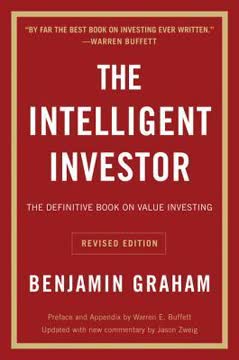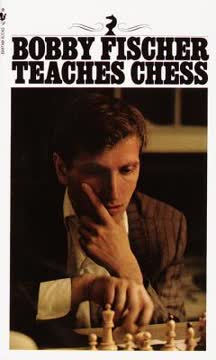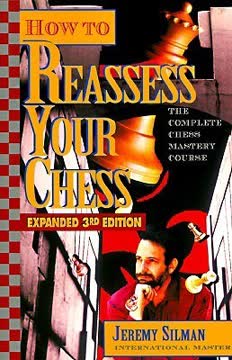Key Takeaways
1. Born to Attack: Early Steps & Intuition
When one of us first plays chess, he is like a man who has already caught a dose of microbes of, say, Hong Kong ‘flu.
Chess as a disease. Mikhail Tal describes his initial encounter with chess not as a choice, but as catching a delightful, inescapable disease. His first serious game, a loss to his cousin, was a "real tragedy" at age 10, highlighting an early competitive spirit. This initial vulnerability quickly turned into fascination under the guidance of his first teacher, Yanis Kruzkop, who instilled a "whole-hearted love for the game."
Early victories & seeking challenge. Encouraged by early wins against family, Tal soon sought stronger opponents. His first game against a master, Ratmir Kholmov, in a 1949 simul, resulted in a win achieved in what he perceived as a "combinative style." This early success, including his first published game at age 12, fueled his desire for tougher competition and hinted at the attacking flair that would define his career.
Intuition and dreams. Tal recounts a unique experience in 1947 where he dreamed about an adjourned position, leading him to find a winning idea upon resumption. While this specific instance of chess dreams didn't recur, it underscores an early connection to intuitive, non-linear thinking that would become a hallmark of his style, often prioritizing interesting ideas over purely calculated lines.
2. Meteoric Rise: From Novice to Champion
I was so cocky that I thought that if there was to be a match, then I would win it.
Rapid ascent through ranks. Tal's progression through the chess ranks was remarkably swift. Bypassing the third category, he quickly achieved second and then first category ratings. His debut in the Riga adult championship at the end of 1950 saw him reach the first category norm, and by 1953, he won the Latvian Championship as the sole first-year university student, fulfilling an "unwritten tradition."
Master title and early challenges. Despite reaching the master norm in the 1953 USSR Team Championship, he was initially granted only a qualifying match against master Vladimir Saigin. His confidence, bordering on cockiness, led him to believe he would win, which he did in a lively match in 1954, securing his master title. This period also saw his first encounters with future rivals like Spassky and Korchnoi.
USSR Championship debut. 1956 marked his first appearance in the USSR Championship final, where he finished 5th. The following year, despite a difficult semi-final, he won the strong 1957 USSR Championship, earning the International Grandmaster title at age 20. This rapid rise from a regional player to national champion and international grandmaster in just a few years was unprecedented.
3. The Magician's Style: Daring Sacrifices & Complications
Yes, it probably has. Nowadays, in my opinion, this happens less frequently, but, you see, sometimes an idea occurs which is so interesting that it proves stronger than me.
The attacking imperative. Tal's name became synonymous with brilliant, attacking chess. From his earliest games, he showed a propensity for tactical complications and piece sacrifices, often prioritizing dynamic play over material or positional safety. This style, while thrilling, sometimes led to unnecessary risks and lost points.
Intuition over calculation. He admits that sometimes an "interesting idea" would compel him to sacrifice, even without complete calculation. This intuitive approach, famously illustrated by the "hippopotamus in the marsh" anecdote during a complicated position, often baffled opponents and commentators alike, who would later analyze his "accurately-calculated" sacrifices.
Double-edged sword. While his attacking style produced numerous brilliancy prizes and memorable games, it also resulted in losses due to miscalculation or over-optimism. He acknowledges that his attempts to find complicated wins "have cost, and still cost you, more points than perhaps anyone else in the world," a trade-off he seemed willing to accept for the sake of creative excitement.
4. Mind Games: Psychology at the Chessboard
I realise that an enemy in life, and an ‘enemy’ at the board are different notions, but do any human feelings towards the opponent – respect, enmity, liking – have an influence on the course of a game? Naturally!
Emotional influence on play. Tal openly discusses how emotions and personal feelings towards opponents can affect his game. Unlike some players who cultivate enmity, Tal finds it difficult to play against those he dislikes, while respect or liking can also influence decisions, sometimes leading to unexpected outcomes like declining or offering draws.
Psychological tactics. He notes that understanding an opponent's "chess character" is crucial. For instance, knowing Averbakh preferred clear positions influenced his decision to offer a complex sacrifice. He also used psychological tactics, like declining a draw from Fischer in a winning position, sensing the younger player's nervousness.
Home ground disadvantage. Playing in his hometown of Riga often felt more difficult than elsewhere. While footballers benefit from familiar surroundings and crowd support, Tal found the added pressure and the perception of him as "the same Misha" by local colleagues challenging, especially when not in peak form.
5. Battling More Than Opponents: Health Challenges
It was here that I made a mistake. I was advised to avoid 1 e4 for the moment, especially since I had prepared for many of Spassky’s favourite schemes against 1 d4, but I became obstinate.
Recurring health issues. Throughout his career, Tal was plagued by significant health problems, primarily related to his kidneys, requiring multiple hospitalizations and operations. These issues frequently coincided with important tournaments and matches, severely impacting his performance.
Playing through illness. Despite doctors' advice, Tal often insisted on playing, sometimes directly after hospital stays or while unwell. He recounts playing games with a temperature, receiving sedatives instead of antibiotics, and even doing analysis from a hospital bed, demonstrating immense dedication but often at the cost of his results.
Impact on performance. His illness particularly affected his ability to maintain concentration and accuracy in the later stages of games, specifically during the crucial "fifth hour" of play. This led to blunders and lost advantages, most notably during the 1962 Candidates Tournament in Curaçao, where his health forced him to withdraw.
6. Climbing the Summit: The Road to World Champion
I was firmly resolved to obtain once again an audition with Botvinnik.
Interzonal success. After winning the 1958 USSR Championship, Tal qualified for the Portorož Interzonal. Despite facing strong international competition and the added pressure of limited qualification spots for Soviet players, he performed well, sharing 1st-4th place and securing his spot in the Candidates Tournament.
Candidates Tournament victory. The 1959 Candidates Tournament in Yugoslavia was a grueling quadruple round-robin. Despite early setbacks and health concerns, Tal's aggressive style and resilience saw him overcome established stars like Keres and Smyslov, ultimately winning the tournament convincingly and earning the right to challenge World Champion Mikhail Botvinnik.
Preparation and confidence. Leading up to the 1960 World Championship match, Tal and his team prepared meticulously, anticipating Botvinnik's openings. Despite his youth and relative inexperience in such a high-stakes match, Tal approached the challenge with confidence, eager for the opportunity to face the reigning champion.
7. Defending the Crown: The Botvinnik Matches
It is both pleasant and complicated to recall the 1960 match.
1960 Match Victory. Tal's first match against Mikhail Botvinnik in 1960 was a triumph. Despite Botvinnik's deep preparation, Tal's dynamic play and ability to create complications, coupled with Botvinnik's time trouble errors, led to a decisive 12.5-8.5 victory, making Tal the youngest World Champion at the time. He highlights the 17th game, featuring his "horrible, anti-positional" 12.f4 move, as particularly memorable for its psychological impact.
1961 Return Match Defeat. The return match in 1961 saw a different Botvinnik – "extremely self-disciplined and aggressive." Botvinnik was excellently prepared, neutralizing Tal's preferred openings and exploiting his opponent's health issues and tactical errors. Tal acknowledges his own poor form and Botvinnik's superior play as the main reasons for the 13-8 loss, ending his reign after just one year.
Lessons learned. The matches, particularly the defeat, taught Tal valuable lessons about preparation, consistency, and the importance of physical fitness. He humorously suggests alternative reasons for his loss, like Botvinnik's change of hotel or a lost "lucky" pencil, but ultimately attributes the result to Botvinnik's improved form and strategic approach.
8. Setbacks & Comebacks: Curaçao and Beyond
It was only then that it became clear to me that it was time to give up the tournament as lost.
Curaçao Candidates Disaster. The 1962 Candidates Tournament in Curaçao was a major setback, primarily due to severe health problems. Tal's performance was drastically affected, particularly in the later stages of games, leading to numerous blunders and losses. Despite his initial optimism, his illness forced him to withdraw, finishing far below expectations.
Post-operation comeback. After undergoing kidney surgery in 1969, Tal experienced a remarkable recovery and resurgence. He describes feeling a "renaissance" and quickly returned to competitive chess, winning tournaments like the one in Tbilisi shortly after his operation, proving that his creative spirit was far from extinguished.
Continued resilience. Despite facing recurring health issues and periods of inconsistent form, Tal continued to compete at the highest level for many years. His ability to bounce back from setbacks, often displaying flashes of his signature attacking brilliance, became a testament to his enduring passion and resilience.
9. The Unbeaten Streak: A New Chapter?
It was said in the press that you were approaching a hundred games without defeat, and that you had become a new, more harmonious Tal. Was this really the case? I had become not new, but more ‘old’.
A remarkable run. In the early 1970s, Tal achieved a widely publicized unbeaten streak, reportedly approaching 100 games. This period saw him win several strong tournaments without a loss, leading some commentators to suggest he had developed a more "harmonious" or positional style.
Tal's perspective. Tal himself downplays the significance of the streak and the idea of a fundamental change in his style. He suggests he had become more "old" than "new," implying a natural evolution rather than a radical transformation. He admits he was in dubious positions during the streak and that opponents' errors contributed to his survival.
The streak ends. The unbeaten run eventually ended in 1973, shortly after a minor operation, in a team match against Balashov. Tal took the end of the streak in stride, joking about starting a new one, indicating his focus remained on the game itself rather than statistical achievements.
10. Beyond the Board: Personality & Philosophy
For us it is simply boring to play in an empty hall.
The artist and the audience. Tal views chess players, particularly at the grandmaster level, as artists performing for an audience. He finds playing in an empty hall "boring" and thrives on the energy and reaction of spectators, seeing the game as a form of creative expression and combat where the player is composer, singer, and critic.
Draw philosophy. While acknowledging the practical necessity of draws, Tal expresses a strong aversion to playing for a draw, especially with White, considering it a "crime against chess." He often declined draw offers, particularly in interesting positions, even when it was strategically prudent to accept, driven by a desire for a fighting game.
Human connection. Tal valued friendly relationships with his opponents, often analyzing games together afterwards and sharing lighthearted moments. He recounts instances of mutual respect and understanding, even after tough losses, highlighting the human element that transcended the competitive struggle at the board.
Last updated:
Review Summary
The Life and Games of Mikhail Tal is widely praised as one of the best chess autobiographies ever written. Readers appreciate Tal's humor, humility, and infectious enthusiasm for chess. The book features 100 annotated games, compelling anecdotes, and insights into Tal's creative and intuitive playing style. Many consider it a masterpiece that appeals to chess players of all levels. Reviewers highlight Tal's unique personality, his ability to inject life into complex positions, and his legendary tactical brilliance. The book's format, presented as an interview, adds to its charm and readability.
Similar Books









Download PDF
Download EPUB
.epub digital book format is ideal for reading ebooks on phones, tablets, and e-readers.




